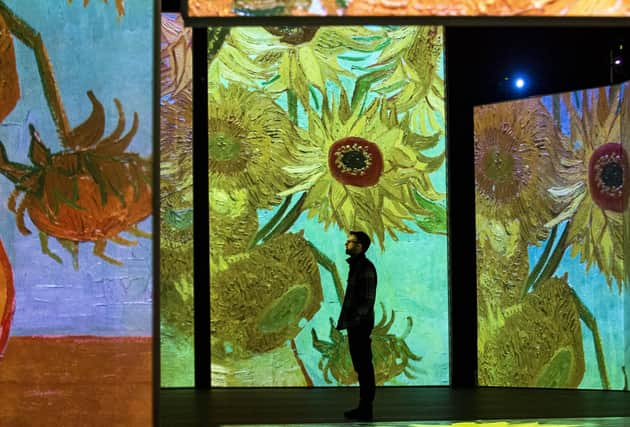Cultural experiences are changing before our eyes in the hunt for new audiences – Brian Ferguson


Emerging from the Cineworld complex around three hours later, I wondered what the iconic actor would have made of the cinematic experience now on offer in his old neighbourhood.
After agreeing to watch The Batman on one of the new “4DX” screens the company has introduced across the UK, I was blissfully unprepared for my first encounter with the “extreme sensory thrills” this would involve.
Advertisement
Hide AdAdvertisement
Hide AdLittle did I know that not only would my seat and the floor beneath have a shaking and vibrating life of their own but that the film was also accompanied by in-house wind, water and strobe lighting effects, all timed to coincide with the action unfolding on screen.
The previous evening I attended the opening of Edinburgh’s latest big art show, Van Gogh Alive, which has taken over Festival Square, a site just ten minutes walk from Cineworld.
This was another multi-sensory experience about as far removed from a visit to the Scottish National Gallery as it is possible to imagine, given that Van Gogh's most famous works had been turned into a 45-minute show in a pop-up venue which combined animation, classical music and aromas.
The back-to-back events had followed recent cultural encounters which were anything but normal.
Advertisement
Hide AdAdvertisement
Hide AdSeveral weeks after attending the National Theatre of Scotland’s latest show at the reborn Leith Theatre, I’m still trying to figure out whether it was a film or theatre event.
Yet The Strange Case of Dr Jekyll & Mr Hyde was also an event like no other I’d been to, with the action unfolding on a giant screen as it was being performed in and around the building on sets which the audience passed through. To blur the boundaries even further, the show could also be experienced in cinemas long after the sets at Leith Theatre had been packed up.
I wrote here the other week about how V&A Dundee’s celebration of dancer and choreographer Michael Clark had redefined the whole idea of what form an exhibition should take, with its multiple video screens and pounding soundtracks.
The same week I was in Paisley where a vast video project event unfolded on the outside of its 800-year-old abbey – the official curtain-raiser for the biggest ever UK-wide celebration of culture, which also featured music, poetry and choral singing.
Advertisement
Hide AdAdvertisement
Hide AdWhile each of the above experiences were rooted in the past, all of them seemed to be geared towards reaching new audiences, which is never a bad thing, and all were jarring in some way.
On Saturday afternoon, I took a spur of the moment trip to the Royal Lyceum Theatre, across the road from Festival Square, for one of the final performances of its latest new production The Scent of Roses.
There was almost something refreshing in how familiar and relaxed everything seemed. But it was also telling that I felt one of the youngest audience members.
A big question for many involved in culture and events is what they will need to do to grab and hold onto the attention of the audiences of the future.
Comment Guidelines
National World encourages reader discussion on our stories. User feedback, insights and back-and-forth exchanges add a rich layer of context to reporting. Please review our Community Guidelines before commenting.
